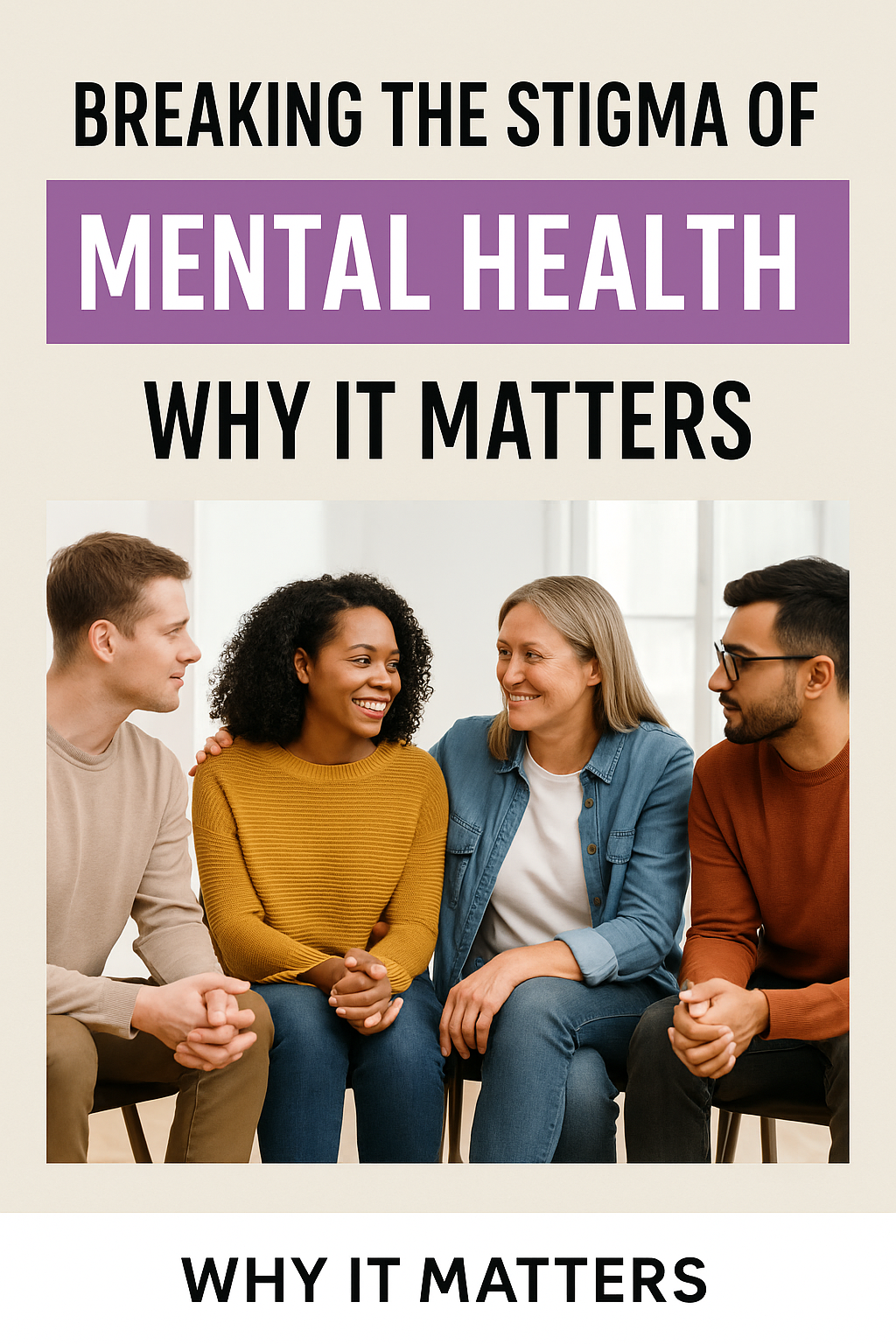Breaking the Stigma of Mental Health: Why It Matters

Mental health conversations shouldn’t be whispered in corners or avoided at dinner tables. Yet here we are in 2025, still tiptoeing around topics that affect one in four adults annually. I’ve watched friends struggle in silence, family members hide their pain, and entire communities pretend mental illness doesn’t exist within their walls.
The truth hits different when it’s personal. When my daughter came home from college describing her roommate’s panic attacks, I realized how unprepared we were for these conversations. Not because we don’t care, but because breaking the stigma of mental health requires intentional effort and honest dialogue.
🧠 Breaking the stigma of mental health isn’t just about being nice—it’s about saving lives. Every day we delay these conversations, someone else suffers in silence. Every time we perpetuate outdated beliefs about mental illness, we create barriers between people and the help they desperately need.
The Deep Roots of Mental Health Stigma

🧠 Mental health stigma didn’t appear overnight. Historical treatment of mental illness reads like a horror story—from medieval “demon possession” beliefs to Victorian-era asylums that warehoused people rather than healing them. These dark chapters created lasting cultural scars that still influence how we view mental health today.
Religious communities often struggled with mental illness, sometimes viewing it through a spiritual lens that blamed the individual. While faith can be incredibly healing, the misconception that mental health issues reflect spiritual weakness has caused immeasurable harm. Understanding the connection between emotional and spiritual health helps us see how breaking the stigma of mental health requires addressing both spiritual and medical perspectives.
The language we inherited reflects this history. Terms like “crazy,” “psycho,” and “unstable” became casual insults, further embedding negative associations with mental health conditions. Each generation passed down these attitudes, creating an invisible barrier between those suffering and those who could help.
💡 Cultural messaging reinforced the shame. Movies portrayed people with mental illness as dangerous villains or comic relief. News stories focused on extreme cases, creating fear rather than understanding. Success stories of recovery rarely made headlines, leaving the public with distorted perceptions of what mental health treatment actually looks like.
📌 The workplace became another battlefield for mental health stigma. Corporate cultures that prize “strength” and “resilience” often punish vulnerability. Employees learn to hide depression behind forced smiles, manage anxiety attacks in bathroom stalls, and pretend everything’s fine during performance reviews. This toxic cycle prevents people from accessing help and perpetuates the myth that mental health struggles indicate professional weakness.
Social media adds modern complexity to ancient stigma. The pressure to present perfect lives online makes admitting mental health struggles feel like public failure. People scroll through carefully curated feeds while battling invisible demons, convinced they’re the only ones struggling. Breaking the stigma of mental health means acknowledging that behind every perfect post might be someone fighting a very real battle.
How Stigma Becomes a Silent Killer

The cost of mental health stigma isn’t abstract—it’s measured in delayed treatment, worsened symptoms, and lives lost. When people fear judgment more than their suffering, they delay seeking help until crisis hits. This pattern repeats across demographics, affecting families regardless of income, education, or community standing.
📌 Treatment delay statistics are sobering. According to the National Alliance on Mental Illness, the average delay between symptom onset and treatment is 11 years. Eleven years of unnecessary suffering because stigma convinced people their struggles weren’t “real” enough for professional help.
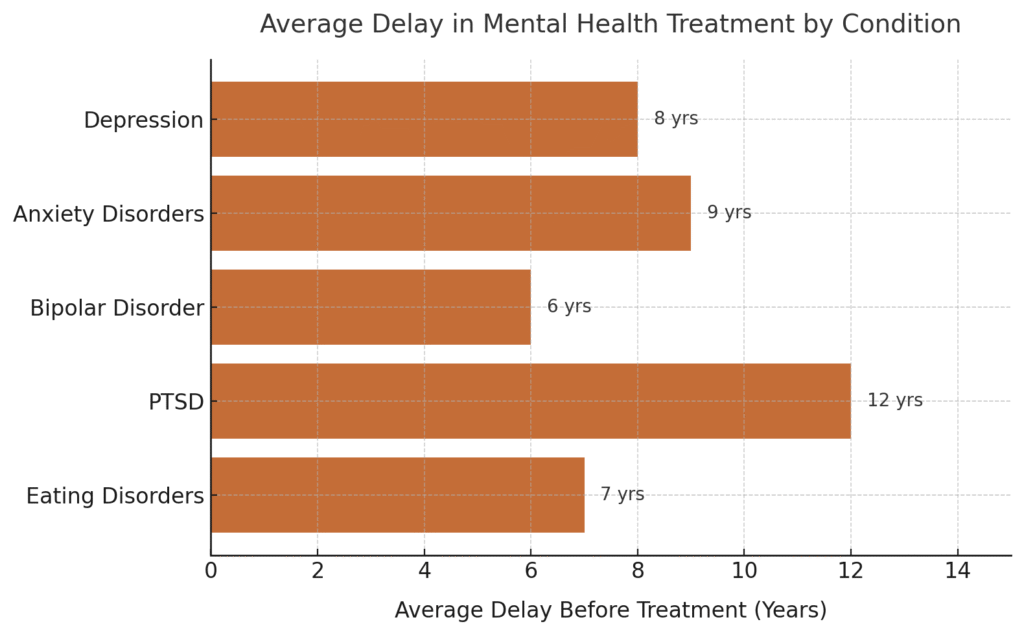
Mental health awareness campaigns try to combat these delays, but stigma runs deeper than surface-level education. People intellectually understand that depression is a medical condition, yet still feel shame when they experience it themselves. This disconnect between knowledge and emotional acceptance keeps the cycle of silent suffering alive.
Workplace discrimination adds another layer of complexity. Despite legal protections, many employees hide mental health conditions to avoid career consequences. The fear of being labeled “unreliable” or “unstable” keeps talented people from accessing accommodations that could improve their performance and well-being.
✅ Family dynamics often mirror societal attitudes. Parents worry about their children being “labeled” or facing discrimination. Siblings feel embarrassed by family mental health issues. Spouses struggle to understand conditions they can’t see, leading to relationship strain and isolation for the affected person. Learning how to navigate challenges with love becomes essential for families dealing with mental health conditions.
The medical system itself sometimes perpetuates stigma through inadequate training or unconscious bias. When healthcare providers dismiss mental health symptoms or fail to screen appropriately, they reinforce the message that these conditions aren’t legitimate medical concerns.
🚨 Emergency rooms become revolving doors for mental health crises. People avoid regular mental health care due to stigma, then end up in crisis situations requiring expensive emergency interventions. This cycle costs healthcare systems billions while delivering suboptimal outcomes for patients who could have been helped with earlier, less intensive treatment.
Insurance companies historically treated mental health as less important than physical health, creating additional barriers to care. Though parity laws exist, subtle discrimination continues through limited provider networks, higher copays, and bureaucratic obstacles that don’t exist for other medical conditions.
Separating Mental Health Facts from Dangerous Fiction
🔍 Myth-busting starts with education. The most persistent myths about mental illness create barriers to understanding and treatment. Let’s tackle the big ones that keep families from having honest conversations about mental health awareness and perpetuate harmful stigma.
Myth: Mental illness is a sign of weakness or personal failure.
Mental health conditions have biological, genetic, and environmental components just like diabetes or heart disease. Brain scans show measurable differences in people with depression, anxiety, and other conditions. Strength has nothing to do with developing a mental health condition—it’s what helps people seek treatment and manage their recovery. Understanding bipolar disorder reveals how complex these medical conditions truly are.
Myth: People with mental illness are dangerous or violent.
The National Institute of Mental Health reports that people with mental health conditions are more likely to be victims of violence than perpetrators. Media portrayals create fear, but the reality is that most people with mental illness pose no danger to others.
Myth: Mental health problems are permanent and untreatable.
Recovery is possible for most mental health conditions with appropriate treatment. Therapy, medication, lifestyle changes, and support systems help millions of people live fulfilling lives while managing mental health conditions. Treatment works when people can access it without shame or barriers.
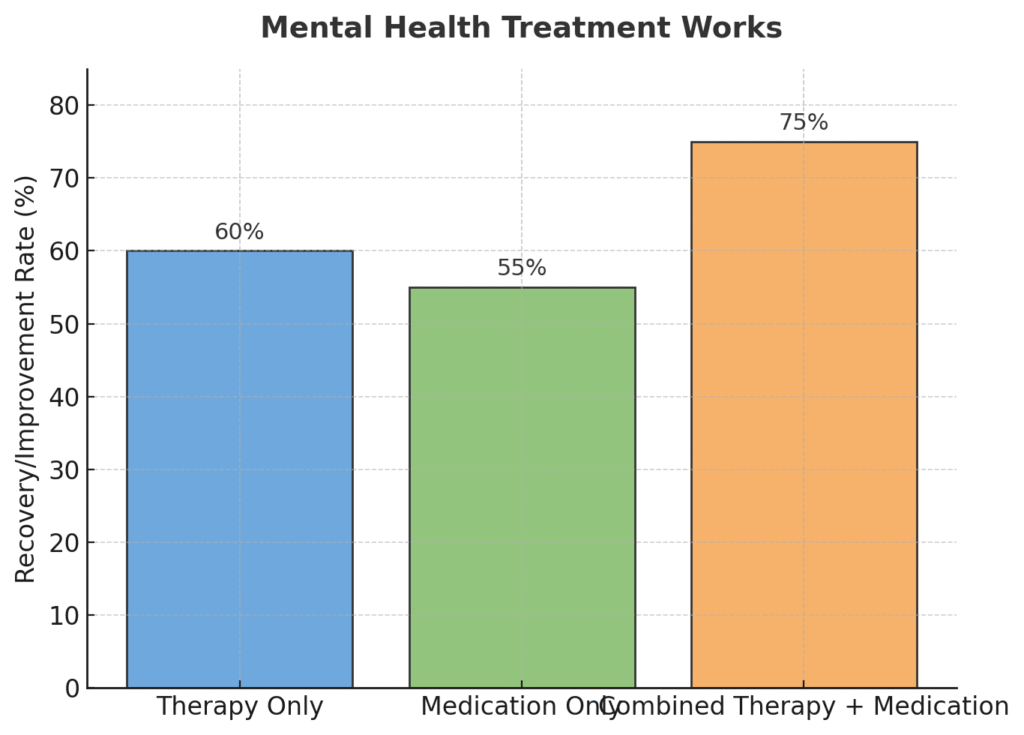
🚨 The “just think positive” myth deserves special attention. Well-meaning friends and family often suggest that people can overcome mental illness through willpower or positive thinking. This harmful misconception implies that those who continue struggling simply aren’t trying hard enough, adding guilt to an already difficult situation. While positive mindset habits can support mental wellness, they cannot cure clinical mental health conditions.
Myth: Therapy is only for “serious” problems.
Counseling and therapy benefit anyone dealing with stress, life transitions, relationship challenges, or personal growth goals. Normalizing mental health support means recognizing that professional help isn’t a last resort—it’s preventive care that can stop small problems from becoming major crises.
Myth: Medication changes your personality.
Properly prescribed psychiatric medications restore brain chemistry balance, allowing people to feel more like themselves, not less. The fear of medication often stems from outdated stereotypes about “zombie-like” effects that rarely occur with modern treatments and proper monitoring.
✅ Cultural myths vary by community but cause similar harm. Some cultures view mental illness as bringing shame to entire families. Others believe that faith alone should be sufficient for healing. Breaking the stigma of mental health requires addressing culture-specific misconceptions while respecting diverse backgrounds and belief systems.
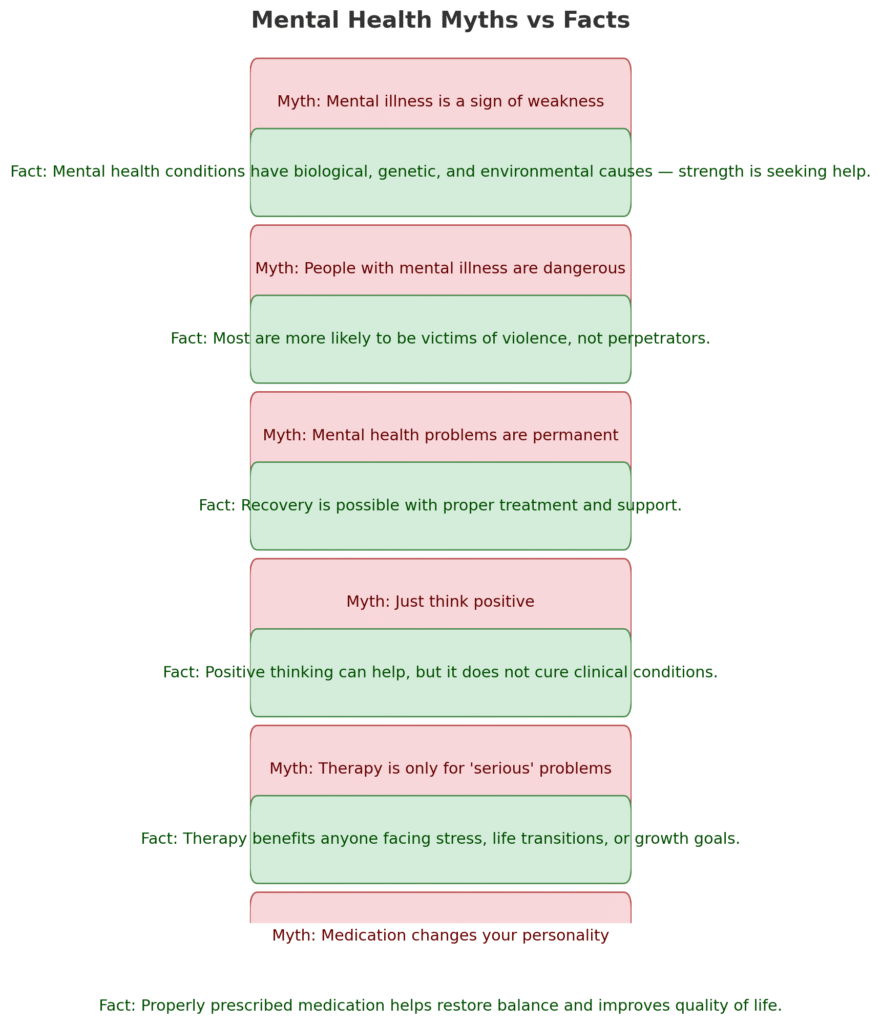
Real Stories: How Mental Health Stigma Hurts Families
Nothing breaks down stigma quite like personal connection. When mental health has a face, a name, and a story, it becomes harder to dismiss or fear. I’ve learned this through our family’s own journey and the brave people who’ve shared their experiences with mental health awareness.
My neighbor Sarah struggled with postpartum depression after her second child. For months, she presented a perfect facade while battling intrusive thoughts and overwhelming sadness. When she finally sought help, she discovered how common her experience was—but she’d suffered in silence because admitting struggle felt like admitting failure as a mother.
💡 Military families face unique stigma challenges. During my Air Force years, seeking mental health support could impact security clearances or career advancement. The “suck it up” mentality pervaded military culture, preventing many service members from accessing care for PTSD, depression, and anxiety. This changed somewhat in recent years, but the cultural shift continues slowly. Learning about trauma recovery strategies became essential for many veterans and their families.
A father in our homeschool community opened up about his son’s ADHD diagnosis. Instead of hiding the condition or making excuses for behavioral challenges, he educated other parents about executive function differences and advocated for children with learning disabilities. His openness helped several other families recognize similar patterns in their children and seek appropriate support.
🏃♂️ Professional success doesn’t protect against mental health struggles. I’ve known doctors, teachers, pastors, and business leaders who battled depression, anxiety, and other conditions while maintaining their careers. Their stories matter because they shatter the myth that mental illness only affects certain types of people or indicates professional incompetence.
These stories matter because they humanize mental health conditions. They show that mental illness affects people we know, love, and respect—not just stereotypes from movies or news stories. When we share experiences appropriately, we create space for others to do the same.
The ripple effect of sharing stories spreads hope. Each person who speaks openly about their mental health journey gives permission for others to do the same. This creates communities where talking about mental illness becomes as normal as discussing physical health concerns.
📌 Children absorb family attitudes about mental health. When parents hide their struggles or speak negatively about therapy and medication, kids learn that mental health is shameful. Conversely, families that normalize mental health conversations raise children who are more likely to seek help when they need it and support friends going through difficult times.
Practical Steps to Reduce Mental Health Stigma
✅ Start with your own language and attitudes. Pay attention to casual use of mental health terms as insults or jokes. When someone says “that’s crazy” or calls something “bipolar,” gently redirect the conversation. Model respectful language that doesn’t equate mental health conditions with negative traits.
Listen without trying to fix or minimize when someone shares mental health struggles. Responses like “everyone feels sad sometimes” or “you just need to get out more” dismiss the person’s experience. Instead, try:
- “That sounds really difficult”
- “Thank you for trusting me with this”
- “How can I best support you?”
👉 Challenge stereotypes when you encounter them. If someone perpetuates myths about mental illness, share factual information calmly. You don’t need to become the mental health police, but speaking up helps normalize accurate understanding of these conditions. Breaking the stigma of mental health requires consistent, gentle education from all of us.
🏃♂️ Create safe spaces for conversation. Make it clear through words and actions that mental health is a topic that can be discussed in your home, workplace, or social circle. Ask open-ended questions about well-being and stress. Share your own struggles appropriately to model vulnerability.
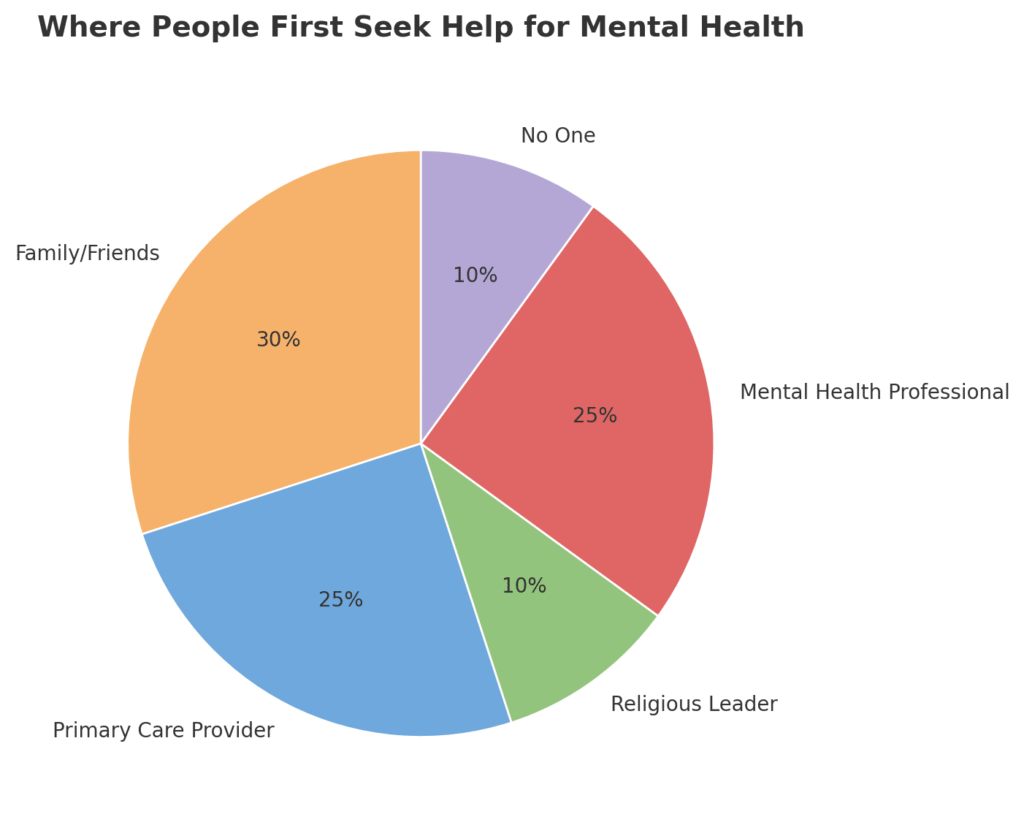
Support mental health initiatives in your community:
- Attend awareness events and fundraising walks
- Volunteer with organizations like NAMI
- Participate in community mental health programs
- Share educational resources on social media
Advocate for better mental health resources and policies. Contact schools about counseling programs, employers about mental health benefits, or legislators about healthcare access. Individual advocacy creates systemic change over time.
💡 Educate yourself about specific conditions affecting your circles. If someone close to you has bipolar disorder, learn about bipolar mood swings and effective management strategies. Knowledge helps you provide better support while reducing mental health stigma through understanding rather than fear.
Practice active allyship, not just passive acceptance. This means interrupting harmful conversations, sharing resources, advocating for accommodations, and amplifying voices of people with lived experience. Being an ally requires action, not just good intentions.
🧠 Normalize mental health check-ins like physical health screenings. Ask friends and family about their emotional well-being as naturally as you’d ask about their physical health. Regular conversations reduce the dramatic weight of mental health discussions and make seeking help feel normal rather than shameful.
Teaching Children About Mental Health Without Fear
📌 Age-appropriate mental health education prevents stigma from taking root. Children naturally accept differences they understand, but they absorb adult attitudes about mental health. Teaching kids about emotional wellness and mental health conditions creates a generation more equipped for honest conversations and mental health awareness.
Start with emotional vocabulary and coping skills. Young children can learn to identify feelings beyond “happy” and “sad.” They can practice deep breathing, understand that big emotions are temporary, and know when to ask for help from trusted adults.
Explain mental health conditions simply and factually when they arise. If a family member has depression, you might say “Uncle Tom’s brain works differently sometimes, which makes him feel very sad even when good things happen. His medicine and doctor visits help him feel better.”
Normalize therapy and mental health treatment. Frame counseling as a normal part of healthcare, like seeing a doctor for physical illness or a dentist for teeth. Avoid language that suggests therapy is only for “serious problems” or as a last resort.
✅ Address bullying and name-calling immediately. When children use mental health terms as insults, explain why this language hurts people. Help them understand that making fun of differences causes real harm and isn’t tolerated in your family. Breaking the stigma of mental health starts with the words we teach our children to use.
Model emotional regulation and help-seeking behavior. Let children see you managing stress appropriately, talking about your feelings, and seeking support when needed. They learn more from what they observe than what we tell them.
🧠 Include mental health in family discussions about overall wellness. Just as families talk about eating nutritious foods and exercising, they can discuss emotional health, stress management, and the importance of mental healthcare. This normalizes talking about mental illness as part of comprehensive health discussions.
Read age-appropriate books about mental health together. Children’s literature addressing anxiety, depression, ADHD, and other conditions helps kids understand these experiences and develop empathy for others who struggle.
Create family traditions around emotional wellness. This might include gratitude practices, regular family meetings where everyone shares feelings, or establishing code words for when someone needs extra support. These practices build emotional intelligence while reducing stigma.
Breaking Mental Health Stigma in Faith Communities

Religious communities can be powerful forces for healing or sources of additional stigma. Having grown up in various church environments and served in military chaplain programs, I’ve seen both extremes. The key lies in balancing spiritual support with practical understanding of mental health as legitimate healthcare while promoting mental health awareness within faith contexts.
🧠 Many faith traditions emphasize compassion and healing. Biblical accounts include depression (Elijah), anxiety (Martha), and trauma responses (David’s psalms). Rather than viewing mental health struggles as spiritual failures, faith communities can frame them as part of the human experience that deserves care and support.
Prayer and professional treatment aren’t mutually exclusive. Just as believers seek medical care for physical ailments while also praying for healing, mental health conditions can be addressed through both spiritual support and clinical treatment. This both/and approach reduces the false choice many people face.
Train religious leaders in mental health literacy. Pastors, priests, rabbis, and imams often serve as first responders for emotional crises, but many lack training in recognizing mental health conditions or making appropriate referrals. Basic education helps religious leaders support their communities more effectively.
Create support groups within faith communities. Depression support groups, anxiety workshops, or grief counseling programs within religious settings combine spiritual resources with peer support. These programs reduce isolation and normalize mental health conversations within the faith context.
✅ Address theological concerns about mental health treatment. Some believers worry that taking medication shows lack of faith or that therapy conflicts with biblical counseling. Faith leaders can help congregants understand that God works through medical professionals and that seeking help demonstrates wisdom, not weakness.
📌 Emphasize the difference between spiritual struggles and clinical conditions. While faith communities excel at addressing spiritual concerns, clinical mental health conditions require professional treatment. Breaking the stigma of mental health means helping believers understand when to seek pastoral care versus professional therapy.
The concept of emotional and spiritual health working together creates a more holistic approach to wellness within faith communities. This integrated perspective helps reduce mental health stigma while honoring both spiritual and medical aspects of healing.
Mental Health Stigma in Schools and Workplaces
💡 Educational environments shape lifelong attitudes about mental health. Schools that integrate social-emotional learning, provide counseling services, and train teachers to recognize mental health signs create supportive environments for students. Those that ignore or minimize these issues perpetuate stigma and miss opportunities for early intervention.
Anti-bullying programs must address mental health-related harassment. Students with depression, anxiety, ADHD, or other conditions often face teasing or exclusion. Clear policies and consistent enforcement protect vulnerable students and send messages about community values while working to reduce mental health stigma at its roots.
Teacher and staff training makes a significant difference. Educators who understand trauma responses, anxiety manifestations, and depression symptoms can respond appropriately rather than punishing behaviors rooted in mental health struggles. Understanding ADHD discipline strategies helps teachers support students with learning differences.
Workplace mental health programs benefit everyone. Employee assistance programs, mental health days, and manager training in recognizing distress create healthier work environments. Companies that prioritize mental wellness see reduced absenteeism, improved productivity, and better employee retention.
🚨 Address the “weakness” perception in competitive environments. Whether in sports, academics, or high-pressure careers, mental health struggles are sometimes viewed as competitive disadvantages. Leaders must actively combat this perception and model that seeking help demonstrates strength, not weakness.
Implement mental health first aid training in schools and workplaces. Just as people learn CPR for physical emergencies, mental health first aid teaches recognition of psychological distress and appropriate responses. This training demystifies mental health crises and empowers bystanders to help effectively.
The goal isn’t to turn every teacher or manager into a therapist, but to create environments where talking about mental illness feels safe and appropriate referrals happen naturally. Breaking the stigma of mental health requires systemic change in the institutions where people spend most of their time.ma of Mental Health in Faith Communities
Religious communities can be powerful forces for healing or sources of additional stigma. Having grown up in various church environments and served in military chaplain programs, I’ve seen both extremes. The key lies in balancing spiritual support with practical understanding of mental health as legitimate healthcare.
🧠 Many faith traditions emphasize compassion and healing. Biblical accounts include depression (Elijah), anxiety (Martha), and trauma responses (David’s psalms). Rather than viewing mental health struggles as spiritual failures, faith communities can frame them as part of the human experience that deserves care and support.
Prayer and professional treatment aren’t mutually exclusive. Just as believers seek medical care for physical ailments while also praying for healing, mental health conditions can be addressed through both spiritual support and clinical treatment. This both/and approach reduces the false choice many people face.
Train religious leaders in mental health literacy. Pastors, priests, rabbis, and imams often serve as first responders for emotional crises, but many lack training in recognizing mental health conditions or making appropriate referrals. Basic education helps religious leaders support their communities more effectively.
Create support groups within faith communities. Depression support groups, anxiety workshops, or grief counseling programs within religious settings combine spiritual resources with peer support. These programs reduce isolation and normalize mental health conversations within the faith context.
Mental Health Stigma in Schools and Workplaces
💡 Educational environments shape lifelong attitudes about mental health. Schools that integrate social-emotional learning, provide counseling services, and train teachers to recognize mental health signs create supportive environments for students. Those that ignore or minimize these issues perpetuate stigma and miss opportunities for early intervention.
Anti-bullying programs must address mental health-related harassment. Students with depression, anxiety, ADHD, or other conditions often face teasing or exclusion. Clear policies and consistent enforcement protect vulnerable students and send messages about community values.
Teacher and staff training makes a significant difference. Educators who understand trauma responses, anxiety manifestations, and depression symptoms can respond appropriately rather than punishing behaviors rooted in mental health struggles.
Workplace mental health programs benefit everyone. Employee assistance programs, mental health days, and manager training in recognizing distress create healthier work environments. Companies that prioritize mental wellness see reduced absenteeism, improved productivity, and better employee retention.
🚨 Address the “weakness” perception in competitive environments. Whether in sports, academics, or high-pressure careers, mental health struggles are sometimes viewed as competitive disadvantages. Leaders must actively combat this perception and model that seeking help demonstrates strength, not weakness.
The Ripple Effect: How Advocacy Benefits Everyone
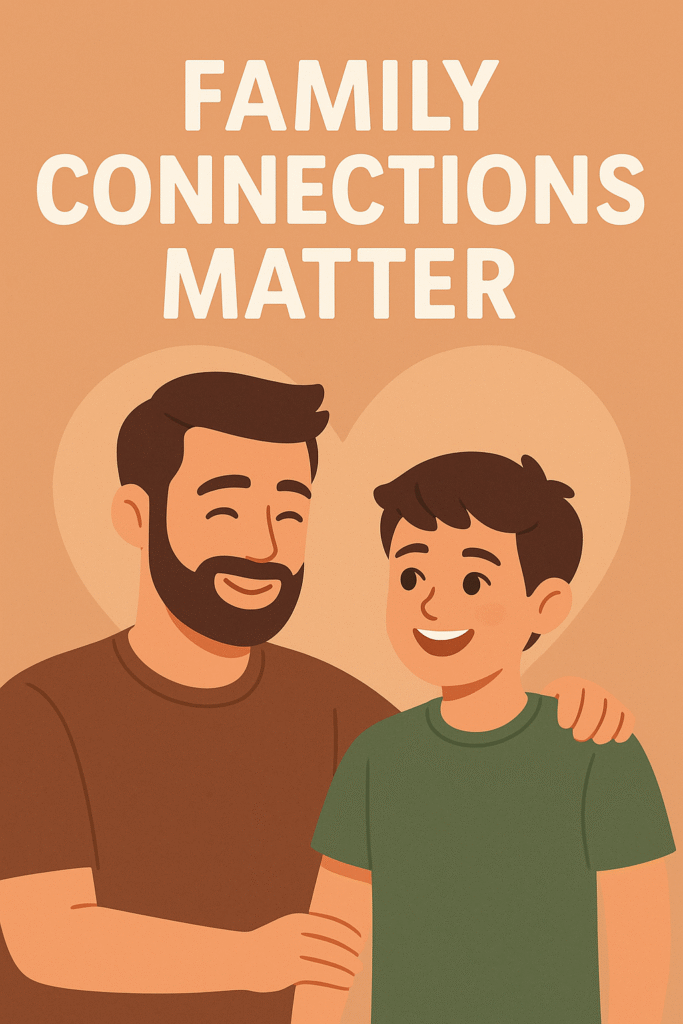
When we work to reduce mental health stigma, the benefits extend far beyond those directly affected by mental illness. Communities with better mental health awareness have lower suicide rates, reduced substance abuse, and stronger social connections overall.
✅ Economic benefits follow improved mental health support. The World Health Organization estimates that every dollar invested in mental health treatment returns four dollars in improved health and productivity. Reducing stigma increases treatment seeking, which benefits individuals, families, and society while promoting broader mental health awareness.
Children who grow up in mentally healthy environments develop better emotional regulation, communication skills, and resilience. They’re more likely to seek help when needed and support others going through difficulties. This creates a positive cycle that strengthens communities over generations.
Innovation thrives in mentally healthy environments. Creative thinking, problem-solving, and collaboration improve when people can address mental health challenges openly. Organizations and communities that embrace mental wellness often see increased innovation and adaptability.
Reduced stigma also decreases the burden on emergency services and crisis intervention systems. When people seek help early, they avoid reaching crisis points that require expensive, intensive interventions. Prevention is always more effective and less costly than crisis response.
🏃♂️ Breaking the stigma of mental health creates more authentic relationships. When people can be honest about their struggles without fear of judgment, deeper connections form. Families become stronger, friendships become more meaningful, and communities become more supportive.
Workplace productivity increases when mental health stigma decreases. Employees who feel safe discussing stress, anxiety, or depression are more likely to seek help before problems affect their work performance. They’re also more likely to support colleagues going through difficult times.
📌 The stigma reduction benefits those without mental health conditions too. Everyone experiences stress, grief, life transitions, and challenges that benefit from professional support. Normalizing mental health care means everyone has access to tools for navigating life’s difficulties.
Communities that successfully reduce mental health stigma often see improvements in physical health outcomes as well. The mind-body connection means that addressing mental wellness supports overall health and longevity for entire populations.
Taking Action: Your Role in Breaking Mental Health Stigma
🏃♂️ Start with self-awareness and education. Examine your own attitudes about mental health. Have you avoided seeking help for stress, anxiety, or depression because of stigma? Do you use language that perpetuates negative stereotypes? Personal growth creates authentic advocacy and genuine mental health awareness.
➡️ Learn about mental health conditions from reliable sources:
- Understanding symptoms and treatment options
- Recovery processes and success stories
- How to respond appropriately when others share experiences
- Knowledge that combats fear and misconceptions
Support people in your life who struggle with mental health. This might mean helping a friend find a therapist, checking in regularly with a family member, or simply listening without judgment. Small actions demonstrate that mental health matters and help is available.
Advocate for better mental health resources in your community. This could involve supporting school counseling programs, workplace mental health initiatives, or community mental health centers. System-level change requires individual advocates working together to end mental health stigma.
📌 Share your own story when appropriate. If you’ve experienced mental health challenges, consider sharing your experience to help others. Personal testimonies are powerful tools for breaking down stigma and encouraging others to seek help. Your story might be exactly what someone else needs to hear.
💡 Ways to support mental health organizations:
- Monthly donations to local mental health nonprofits
- Volunteering at awareness events and fundraisers
- Spreading educational content on social media
- Participating in community mental health initiatives
Model mental health literacy in your daily interactions. Use person-first language (“person with depression” rather than “depressed person”), correct misconceptions when you hear them, and treat mental health with the same seriousness as physical health.
Create opportunities for mental health conversations. Host community discussions, share educational resources on social media, or organize fundraising events for mental health organizations. Breaking the stigma of mental health requires consistent, ongoing effort from all of us.
🧠 Practice patience and persistence. Changing deeply ingrained attitudes takes time. Don’t get discouraged when progress seems slow or when people resist new perspectives. Every conversation, every corrected misconception, and every person who seeks help because of your advocacy makes a difference.
Focus on connection over correction. While it’s important to address harmful myths and language, remember that relationships matter more than being right. Approach stigma reduction with compassion, understanding that most people perpetuate harmful attitudes out of ignorance rather than malice.
Remember that talking about mental illness isn’t just about helping others—it’s about creating a world where you and your loved ones can access help without shame when you need it. Mental health affects us all, directly or indirectly.
Explore More from Our Family of Blogs
Mountains Will Move
Faith-based encouragement for everyday families.
Everyday Exposed
No-filter truth hub for critical thinking and clarity.
Thank you for being part of the community. God Bless you and your family.
